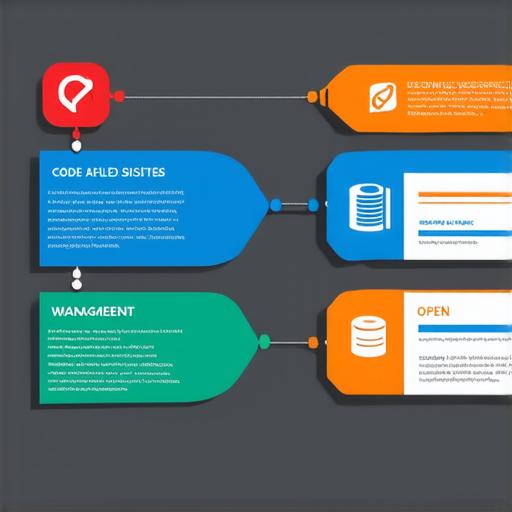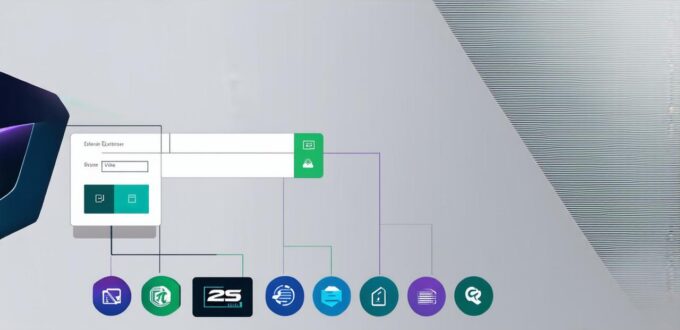As a software developer, it’s essential to understand the different types of software that exist and how they differ from each other. In this article, we will explore the three primary types of software: application software, system software, and network software.
Application Software
Application software is designed for end-users to perform specific tasks or functions. It includes programs such as web browsers, word processors, spreadsheets, media players, and graphic design tools. Application software runs on top of the operating system and interacts directly with the user.
One of the main advantages of application software is its ability to automate repetitive tasks and increase productivity. For example, a word processor can help users create documents, while a spreadsheet program can be used for data analysis and financial calculations. Additionally, application software can improve accuracy by reducing the risk of human error.
Another advantage of application software is its flexibility. It can run on different operating systems and platforms, making it accessible to a wide range of users. Furthermore, application software can be customized or modified to meet specific needs, such as changing the font size or adding new features to a program.
System Software
System software is responsible for managing the computer’s hardware resources and providing essential services that support other software programs. It includes operating systems, device drivers, firmware, and other low-level software components. System software controls how the computer operates and provides the interface between the hardware and software.
One of the main advantages of system software is its ability to manage and optimize the performance of the computer’s hardware resources. For example, an operating system can allocate memory and processors to different programs, ensuring that each program runs efficiently without interfering with other programs. Additionally, system software can improve security by protecting the computer from viruses and malware.
Another advantage of system software is its stability. It ensures that the computer runs smoothly and consistently, even when multiple programs are running simultaneously. Furthermore, system software can be updated or patched to fix bugs and improve performance.
Network Software
Network software enables communication between computers on a network. It includes protocols, operating systems, routers, switches, and other components that manage data transmission and ensure that data is delivered correctly to the intended destination. Network software is responsible for providing the infrastructure and services that support communication and collaboration among multiple users.
One of the main advantages of network software is its ability to enable communication and sharing of resources across a network. For example, email software can allow users to send and receive messages from other users on the same network. Additionally, network software can improve security by protecting data transmission from interception or modification.
Another advantage of network software is its scalability. It can be customized or modified to accommodate different numbers of users and types of networks, making it accessible to a wide range of organizations and individuals. Furthermore, network software can be updated or patched to fix bugs and improve performance.
Case Studies and Personal Experiences
As a software developer, I have had the opportunity to work on various projects that involved different types of software. For example, I worked on an application software project that involved creating a new word processor for a small business. The client wanted a program that could create professional-looking documents with minimal effort. We used a programming language called Python to develop the software and incorporated features such as spell checking and document formatting.
Another project I worked on involved network software. We were tasked with creating a new protocol for secure data transmission between multiple servers in a large enterprise network. We used C++, a high-performance programming language, to develop the software and incorporated encryption algorithms to protect data from interception or modification.
These experiences have taught me the importance of understanding the different types of software and how they can be used to solve specific problems. It has also shown me how software development requires a combination of technical skills, creativity, and attention to detail.
FAQs
Q: What is application software?
Application software is designed for end-users to perform specific tasks or functions.
Q: What is system software?
System software is responsible for managing the computer’s hardware resources and providing essential services that support other software programs.
Q: What is network software?
Network software enables communication between computers on a network.
Q: What are the advantages of application software?
Application software is flexible, can automate repetitive tasks, improve accuracy, and run on different operating systems and platforms.
Q: What are the advantages of system software?

System software manages hardware resources, improves security, and ensures stability.
Q: What are the advantages of network software?
Network software enables communication and sharing of resources across a network, improves security, and is scalable.
Summary
In conclusion, understanding the three primary types of software is crucial for software developers to create effective solutions that meet specific needs. Application software, system software, and network software each have their unique characteristics and advantages. By incorporating these different types of software into a project, developers can create programs that are efficient, secure, and accessible to a wide range of users. As a software developer, it’s essential to continue learning about new technologies and techniques to stay ahead of the curve and develop innovative solutions that meet the evolving needs of businesses and individuals alike.
